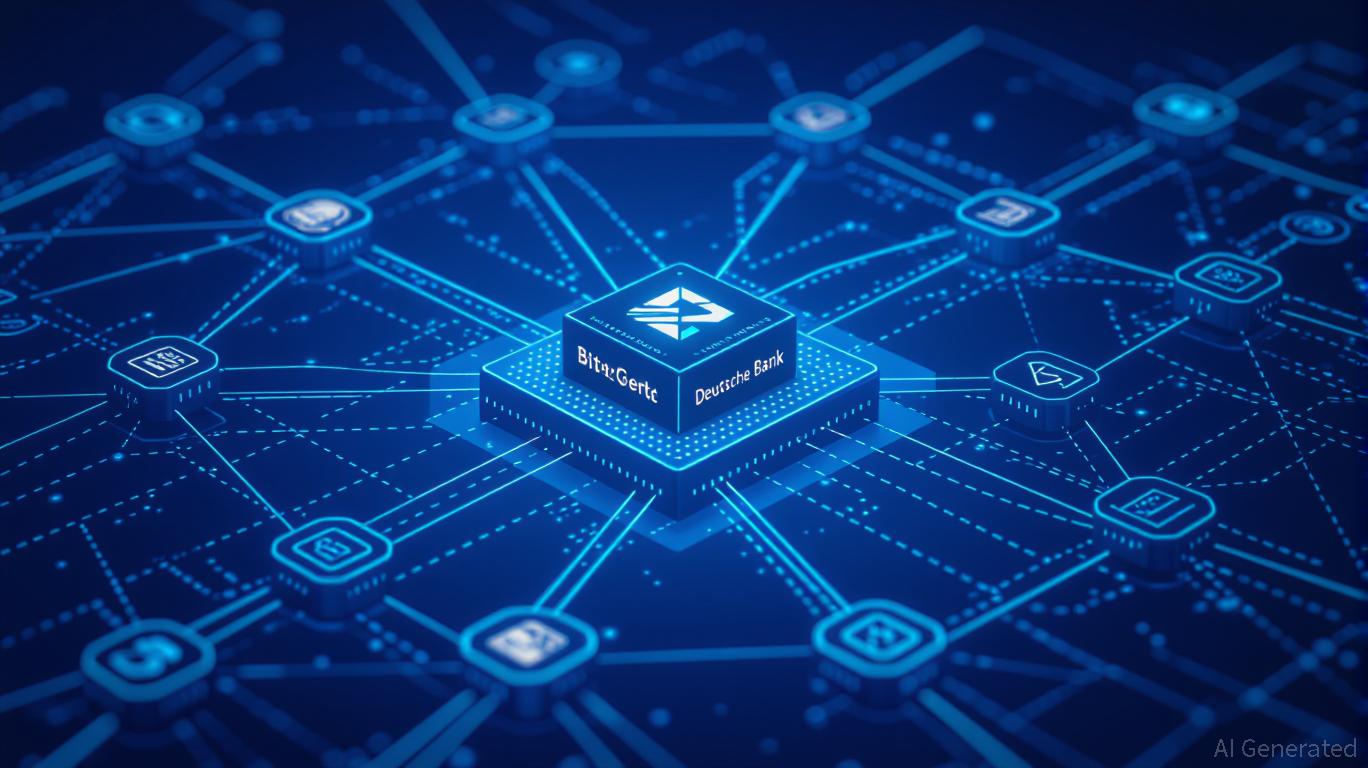Astar 2.0's Strategic Enhancement and Market Impact: Advancements in Blockchain Infrastructure and the Changing Landscape of DeFi
- Astar 2.0 redefines DeFi by addressing scalability, interoperability, and security through infrastructure upgrades like zkEVM and cross-chain protocols. - Strategic partnerships with Japanese web2 giants and innovations like dApp Staking v3 enhance real-world utility and community-driven governance. - By bridging Polkadot , Ethereum , and BSC ecosystems, Astar positions itself as a cross-chain hub, outperforming traditional DeFi's fragmented models. - Emphasis on security and compliance aligns with indus
Strategic Upgrades: The Technical Backbone of Astar 2.0
The progression of Astar Network from 2023 through 2025 has featured a range of targeted improvements aimed at boosting both scalability and interoperability. The 2024 debut of the Astar zkEVM mainnet brought a zero-knowledge
Additionally, the rollout of Astar’s dApp Staking v3 in 2024 introduced a new approach to tokenomics, fostering a more flexible staking environment. This system incentivizes users not just for providing liquidity but also for engaging in governance, aligning the interests of developers, validators, and users, as described in
Looking forward, Astar Evolution v1.5 sets out the 2025 roadmap, emphasizing Coretime on Polkadot—a method to better allocate resources—and Async Backing, which is designed to enhance transaction finality and network flexibility, as detailed in

Infrastructure Breakthroughs: Comparing Astar 2.0 and Conventional DeFi
While early DeFi models brought significant change, they often function within isolated blockchain environments. These frameworks face ongoing issues with scalability and interoperability, which restrict their capacity to efficiently manage complex financial activities, as discussed in
Astar 2.0’s decentralized structure also boosts transparency and lowers systemic risks. Unlike legacy finance, where centralized bodies dictate rules and access, Astar’s on-chain governance lets the community decide on important matters, as described in
Security is another area where Astar 2.0 aligns with industry priorities. Recent incidents in DeFi, such as the $116 million
Market Impact: Astar 2.0’s Distinct Advantages
The targeted improvements in Astar 2.0 give it a strong chance to outpace conventional DeFi in several important aspects. Its cross-chain capabilities reduce barriers in multi-chain transactions, a key benefit as DeFi expands beyond the Ethereum ecosystem. Additionally, partnerships with established web2 companies demonstrate a practical approach to broader adoption, connecting decentralized and traditional finance.
The evolving DeFi market in 2025 is likely to favor platforms like Astar. As regulatory demands increase, protocols that emphasize security and compliance—such as Astar’s on-chain governance and Coretime enhancements—are expected to draw more institutional attention, as outlined in
Nonetheless, obstacles persist. The latest DeFi breaches reveal the vulnerability of even advanced protocols. Astar’s long-term success will rely on its capacity to balance innovation with effective risk controls, ensuring its infrastructure can endure both technical and regulatory challenges.
Conclusion
Astar 2.0 signals a new chapter in blockchain progress, utilizing strategic enhancements in scalability, interoperability, and governance to overcome the weaknesses of earlier DeFi models. By incorporating technologies like zkEVM and
Disclaimer: The content of this article solely reflects the author's opinion and does not represent the platform in any capacity. This article is not intended to serve as a reference for making investment decisions.
You may also like
Astar 2.0’s Tactical Rollout and Its Impact on the Market
- Astar Network launched Astar 2.0 on September 13, 2023, aiming to unify Ethereum and Substrate blockchains via Astar Link. - The platform emphasizes interoperability, revised tokenomics, and enterprise partnerships to challenge L2 leaders like Arbitrum and Optimism . - With 150,000 TPS and cross-chain integrations, Astar 2.0 targets scalable DeFi adoption but faces TVL declines and competition from ZK-rollups. - Enterprise collaborations with Sony and Toyota highlight real-world use cases, though market

Trust Wallet Token (TWT) Price Forecast: Assessing the Influence of DeFi Collaborations and Growing Institutional Attention
- Trust Wallet Token (TWT) expands utility via DeFi partnerships and institutional adoption, transitioning from governance to multifunctional asset. - Strategic collaborations with Ondo Finance (RWAs) and Binance's FlexGas feature enhance TWT's institutional appeal and transactional utility. - CZ's endorsement and Trust Premium loyalty program drive demand, while price projections suggest potential growth to $3-$15 by 2025-2030. - Risks include regulatory uncertainty, competition, and reliance on Trust Wal

ZK Atlas Enhancement: Driving Blockchain Expansion and Attracting Institutional Investments
- ZKsync's Atlas Upgrade (Oct 8, 2025) breaks scalability barriers with 15,000+ TPS, near-zero fees, and ZK proofs enhancing Ethereum's Layer 2 performance. - Innovations like Airbender proof system (40% lower overhead) and multi-VM compatibility enable seamless DeFi interoperability, attracting institutional capital seeking secure, scalable infrastructure. - Post-upgrade ZK token surged 50%, reflecting investor confidence, while partnerships like Grvt's $19M funding signal active institutional adoption of

Astar (ASTR) Experiences Price Rally in Late October 2025: Institutional Interest in Blockchain Interoperability Rises
- Astar (ASTR) price surged in late October 2025 as institutional interest in blockchain interoperability solutions intensified. - Astar's migration of DOT functionalities to its Asset Center improved cross-chain efficiency, attracting institutional trust. - Partnerships with Bitget, Startale Group, and Japan's Web3 leaders strengthened Astar's role as a bridge between traditional finance and decentralized ecosystems. - EURAU stablecoin's CCIP expansion highlighted growing institutional consensus on intero
